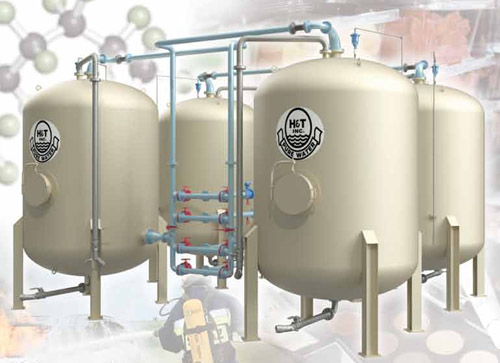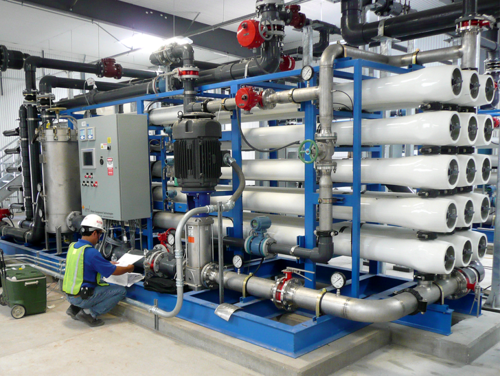Your Overview to PFAS Treatment Technologies and Benefits
The prevalence of PFAS contamination in water resources necessitates a complete understanding of readily available treatment modern technologies. Each modern technology not only targets specific PFAS compounds but likewise plays an essential role in improving general water top quality and securing environmental stability.
Understanding PFAS Contamination
Recognizing PFAS contamination is vital for addressing its pervasive impact on ecological and human health (m270 pfas treatment). Per- and polyfluoroalkyl materials (PFAS) are a team of synthetic chemicals extensively utilized in different commercial and customer items due to their water- and grease-resistant residential properties. Generally discovered in firefighting foams, non-stick cookware, and water-repellent fabrics, PFAS have actually gotten in the environment via production processes, wastewater discharges, and leaching from land fills
Once launched, these materials continue in the environment, resulting in extensive contamination of dirt and water resources. Their unique chemical framework, identified by strong carbon-fluorine bonds, renders them immune to deterioration, causing a sensation referred to as "forever chemicals." As a result, PFAS can accumulate in the human body and the food web, potentially causing damaging health impacts, consisting of immune system disruption, developmental concerns, and an enhanced risk of certain cancers cells.
Regulatory firms and health and wellness companies are increasingly recognizing the relevance of PFAS contamination, prompting initiatives to check, examine, and reduce its results. Recognizing the paths of PFAS contamination is necessary for notifying public policy and developing effective strategies to shield both environmental and human wellness.
Overview of Treatment Technologies
Numerous treatment modern technologies have actually been developed to deal with the difficulties posed by PFAS contamination in water and dirt. These innovations can be generally categorized right into numerous categories, each with its one-of-a-kind systems and effectiveness in eliminating PFAS substances.
One noticeable approach is ion exchange, which uses material products to catch and get rid of PFAS from infected water. Another technology, progressed oxidation procedures (AOPs), uses strong oxidants and ultraviolet light to break down PFAS into less hazardous materials.

Turned On Carbon Filtration
Turned on carbon purification is an extensively utilized method for the elimination of PFAS from contaminated water, known for its ability to adsorb a broad range of organic compounds. This innovation uses activated carbon, a highly porous product with a comprehensive surface area, which assists in the binding of PFAS molecules via physical adsorption. The performance of turned on carbon in getting rid of PFAS is affected by numerous variables, consisting of the sort of carbon made use of, the call time, and the focus of PFAS in the water.
Among the benefits of turned on carbon purification is its convenience; it can be implemented in various arrangements, such as granular turned on carbon (GAC) systems or powdered turned on carbon (SPECIAL-INTEREST GROUP) systems. GAC systems are commonly used in larger-scale applications, while political action committee can be made use of in smaller sized or momentary configurations. The modern technology is fairly very easy to run and preserve, making it accessible for lots of water treatment centers.

Ion Exchange Equipment
Ion exchange systems stand for one more effective technique for the removal of PFAS from infected water, complementing approaches like triggered carbon purification. These systems operate the concept of trading ions in the water with ions hung on a resin product. Ion Full Report exchange resins can be especially developed to target the negatively billed PFAS compounds, properly recording them and allowing cleaner water to travel through.
One of the key advantages of ion exchange systems is their capacity to eliminate a large range of PFAS, including both long-chain and short-chain versions. This adaptability makes them suitable for numerous applications, ranging from metropolitan water therapy to industrial procedures. Furthermore, ion exchange systems can usually accomplish lower discovery limitations for PFAS compared to some various other treatment approaches, therefore enhancing water high quality.
However, it is important to keep track of and manage original site the regrowth of ion exchange media, as the performance can decrease in time as a result of saturation. Proper upkeep and substitute of the resin are crucial for maintaining the system's effectiveness. Overall, ion exchange systems provide a reliable and reliable solution for PFAS removal, adding dramatically to risk-free alcohol consumption water standards and environmental management.
Advanced Oxidation Processes
Advanced Oxidation Processes (AOPs) utilize effective oxidants to properly weaken PFAS substances in infected water. These ingenious treatment methods produce highly reactive types, such as hydroxyl radicals, that can break down intricate PFAS particles right into less dangerous results. m270 pfas treatment. AOPs typically employ combinations of ultraviolet (UV) light, ozone, hydrogen peroxide, or Fenton's reagent, enhancing the oxidation potential and improving degradation efficiency
The primary benefit of AOPs depends on their ability to target a wide array of PFAS substances, consisting of both long-chain and short-chain variations. This adaptability is necessary, as PFAS contamination usually entails blends of various compounds with varying chemical frameworks. Furthermore, AOPs can be incorporated right into existing water therapy systems, making them a functional remedy for many municipalities and industries.
Nonetheless, the execution of AOPs can be resource-intensive, needing mindful factor to consider of operational costs and power usage. Additionally, while AOPs work in breaking down PFAS, they might not totally eliminate all by-products, necessitating more treatment actions - m270 pfas treatment. In general, AOPs stand for an appealing avenue for resolving PFAS contamination, adding to cleaner water resources and boosted public wellness security

Final Thought
By great site choosing the proper technology, areas can enhance water top quality, safeguard public wellness, and reduce the ecological risks associated with PFAS exposure. Proceeded research and application of these methods are necessary for effective monitoring of PFAS contamination in affected areas.